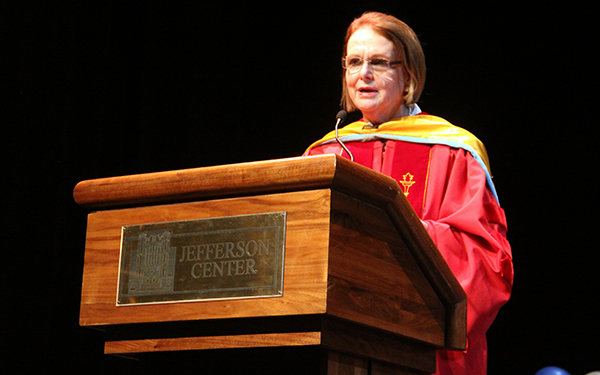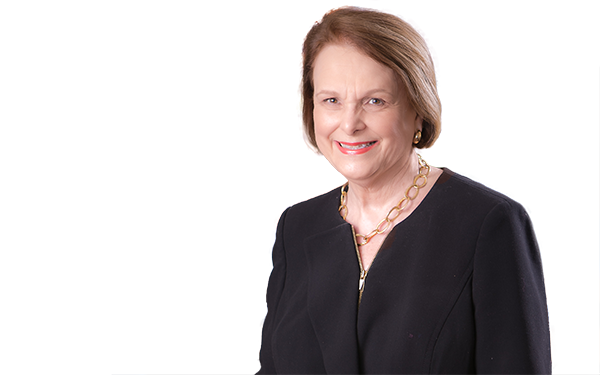There was no swelling music, no one dramatically running into a meeting holding a graph, no silver screen moment when the leaders of the Roanoke City schools realized they’d done something extraordinary.
They hit an 86 percent on-time graduation rate and — for the first time — black and white students were graduating at the same rate. That moment did not come out of nowhere. Last year, the district was close to parity with 85 percent of white students and 83 percent of black students graduating on time but it was still to be savored.
“This is an incredibly amazing feat for an urban district anywhere,” Superintendent Rita Bishop told The Seventy Four.
This past year’s 86 percent on-time graduation rate was also the 13,000-student district’s highest but it’s a watermark that has been steadily climbing for the last eight years.
“School improvement is a very methodical event, and we had been making really steady progress,” Bishop said. “I wish I could be more Hollywood about it, but I’m not.”
Maybe that’s because Bishop is too busy doing the hard, consistent work of raising achievement in a district where more than three-quarters of students are eligible for free and reduced-price lunch. A thousand students are English language learners, and they speak more than 40 languages. On any day about 600 students are homeless.
“Our core beliefs say we celebrate our diversity and all students can and must learn”
When Bishop took the top schools job in Roanoke in 2007, the graduation rate was 60 percent. Since then, Bishop and school leaders have emphasized outcomes and equity through a series of new specialized programs.
There’s a program to help middle and high school students who have discipline problems, which can often derail graduation. The district’s technical education program has expanded, awarding about 1,400 certificates this year, up from 50 in 2007.
Advanced students can attend a governor’s school for science and technology. Any student who graduates with at least a 2.0 GPA can get two years of free tuition at the local community college.
Two other programs of which Bishop is particularly proud are not explicitly tied to on-time graduation but have amplified learning in the Roanoke schools.
The district wrapped its third summer of what it calls RCPS Plus, an optional summer enrichment for students from elementary school to incoming ninth-graders. The program is based on gifted and talented curriculum but serves all students “from special ed to ELL to everything in between,” Bishop said, in an effort to prevent summer slide.
“We all know that kids lose ground over the summer and so we have addressed that pretty aggressively,” she said. Tracking has shown that RCPS Plus students — whose summer break ends up being little more than two weeks — have better attendance, better attitudes about school and better academic results. First day of school in Roanoke is Aug. 18.
She also cites the Forest Park School, a unique program that helps over-age or under-credited students earn a diploma. The school opened in the fall of 2008; if its graduates could be included in the district’s graduation rate, it would top 90 percent, Bishop said.
The broader Roanoke community also has been a huge help in improving the schools, Bishop said. Local churches and other houses of worship help with things like coat drives and snacks, the Elks club is contributing money for supplies, and the City Council has made a big investment in the schools.
“This is a community that believes in education. If we need something, we can get the word out and they do respond,” she added.

Rita Bishop speaks at the Forest Park graduation ceremony. (Photos courtesy Roanoke City Public Schools)
All of these efforts have led not only to parity in graduation rates but a narrowing of the test score achievement gap. There was about a 15-point gap in reading scores and 8 points in math between white and black students last school year, down from 22 points in reading and 17 in math two years ago, according to a presentation she gave to the meeting of the Council of Urban Boards of Education July 24.
Bishop reports all of this information to the public via an equity scorecard.
“Our core beliefs say we celebrate our diversity and all students can and must learn,” she said. “It’s really important to know what everybody is doing.”
Despite all the successes, Bishop knows her work isn’t done. Roanoke’s graduation rate is still lower than the Virginia state average, which was close to 90 percent in 2014, according to the Annie E. Casey Foundation’s KidsCount survey.
“We’re pretty driven around here,” she said. “It’s not about any of us, it’s just about the kids.”
Get stories like these delivered straight to your inbox. Sign up for The 74 Newsletter


;)
